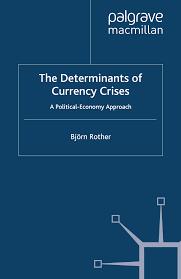Question
DATE S&P 500 Index Gold Prices S&P returns Gold returns 1975 90.19 139.30 1976 107.46 133.80 19.15% -3.95% 1977 95.10 160.45 -11.50% 19.92% 1978 96.11
| DATE | S&P 500 Index | Gold Prices | S&P returns | Gold returns | |||||||||||||||||||||||
| 1975 | 90.19 | 139.30 | |||||||||||||||||||||||||
| 1976 | 107.46 | 133.80 | 19.15% | -3.95% | |||||||||||||||||||||||
| 1977 | 95.10 | 160.45 | -11.50% | 19.92% | |||||||||||||||||||||||
| 1978 | 96.11 | 207.83 | 1.06% | 29.53% | |||||||||||||||||||||||
| 1979 | 107.94 | 455.08 | 12.31% | 118.97% | |||||||||||||||||||||||
| 1980 | 135.76 | 594.92 | 25.77% | 30.73% | |||||||||||||||||||||||
| 1981 | 122.55 | 410.09 | -9.73% | -31.07% | |||||||||||||||||||||||
| 1982 | 140.64 | 444.30 | 14.76% | 8.34% | |||||||||||||||||||||||
| 1983 | 164.93 | 389.36 | 17.27% | -12.37% | |||||||||||||||||||||||
| 1984 | 167.24 | 320.14 | 1.40% | -17.78% | |||||||||||||||||||||||
| 1985 | 211.28 | 320.81 | 26.33% | 0.21% | |||||||||||||||||||||||
| 1986 | 242.17 | 391.23 | 14.62% | 21.95% | |||||||||||||||||||||||
| 1987 | 247.08 | 486.31 | 2.03% | 24.30% | |||||||||||||||||||||||
| 1988 | 277.72 | 418.49 | 12.40% | -13.95% | |||||||||||||||||||||||
| 1989 | 353.40 | 409.39 | 27.25% | -2.17% | |||||||||||||||||||||||
| 1990 | 330.22 | 378.16 | -6.56% | -7.63% | |||||||||||||||||||||||
| 1991 | 417.09 | 361.06 | 26.31% | -4.52% | |||||||||||||||||||||||
| 1992 | 435.71 | 334.80 | 4.46% | -7.27% | |||||||||||||||||||||||
| 1993 | 466.45 | 383.35 | 7.06% | 14.50% | |||||||||||||||||||||||
| 1994 | 459.27 | 379.29 | -1.54% | -1.06% | |||||||||||||||||||||||
| 1995 | 615.93 | 387.44 | 34.11% | 2.15% | |||||||||||||||||||||||
| 1996 | 740.74 | 369.00 | 20.26% | -4.76% | |||||||||||||||||||||||
| 1997 | 970.43 | 288.74 | 31.01% | -21.75% | |||||||||||||||||||||||
| 1998 | 1229.23 | 291.62 | 26.67% | 1.00% | |||||||||||||||||||||||
| 1999 | 1469.25 | 282.37 | 19.53% | -3.17% | |||||||||||||||||||||||
| 2000 | 1320.28 | 271.45 | -10.14% | -3.87% | |||||||||||||||||||||||
| 2001 | 1148.08 | 275.45 | -13.04% | 1.47% | |||||||||||||||||||||||
| 2002 | 798.55 | 321.18 | -30.44% | 16.60% | |||||||||||||||||||||||
| 2003 | 1111.92 | 417.25 | 39.24% | 29.91% | |||||||||||||||||||||||
| 2004 | 1211.92 | 435.60 | 8.99% | 4.40% | |||||||||||||||||||||||
| 2005 | 1248.29 | 513.00 | 3.00% | 17.77% | |||||||||||||||||||||||
| 2006 | 1418.30 | 635.70 | 13.62% | 23.92% | |||||||||||||||||||||||
| 2007 | 1468.36 | 836.50 | 3.53% | 31.59% | |||||||||||||||||||||||
| 2008 | 903.25 | 869.75 | -38.49% | 3.97% | |||||||||||||||||||||||
| 2009 | 1115.10 | 1087.50 | 23.45% | 25.04% | |||||||||||||||||||||||
| 2010 | 1257.64 | 1420.25 | 12.78% | 30.60% | |||||||||||||||||||||||
| 2011 | 1257.60 | 1531.00 | 0.00% | 7.80% | |||||||||||||||||||||||
| 2012 | 1426.19 | 1664.00 | 13.41% | 8.69% | |||||||||||||||||||||||
| 2013 | 1848.36 | 1204.50 | 29.60% | -27.61% | |||||||||||||||||||||||
| 2014 | 2058.90 | 1135.80 | 11.39% | -5.70% | |||||||||||||||||||||||
| 2015 | 2043.94 | 1060.30 | -0.73% | -6.65% | |||||||||||||||||||||||
| 2016 | 2238.83 | 1061.19 | 9.54% | 0.08% | |||||||||||||||||||||||
| Data: This project makes use of annual data for two risky securities: the S&P 500 Index and Gold. Annual values for each of these securities during the period from 1975-2016 are provided in a spreadsheet. You should use an annual risk-free rate of 4% for this project. Return Calculations: Calculate annual returns for each of the two securities from 1976 through 2015. Calculate the average annual return, the standard deviation of annual returns, and the correlation between the returns of the two securities during this period and fill in the table provided. (Note: all of these calculations are based on annual security % returns NOT index values). Attach the spreadsheet showing all of the relevant calculations as Exhibit 1.
Capital Allocation Lines: Assume that the mean return, standard deviation, and correlation estimates you calculated above provide a reasonable forecast of the expected returns and risks of these securities for the coming year. Based on these forecasts, plot the two risky securities on an expected return standard deviation graph. Also, plot the risk-free security. Be sure to label all three securities on the graph. Draw the Capital Allocation Line for each of the risky securities (S&P and Gold). Attach the graph as Exhibit 2. Risky Portfolios: Calculate the expected returns and standard deviations of portfolios that combine the two risky securities (S&P and Gold), varying weights from 0% to 100% in increments of 5% (note: this should result in 21 portfolios). Attach the spreadsheet showing all relevant calculations as Exhibit 3. The Opportunity Set and the Tangency Portfolio: Plot the risk-free security and the 21 portfolios described in question 4 on an expected return standard deviation graph. Be sure to clearly label the S&P 500, Gold, and the risk-free security on the graph. Identify and label the minimum variance portfolio on the graph. Identify and label the optimal risky portfolio (a.k.a. the tangency portfolio) on the graph and draw the Capital Allocation Line (CAL) for this portfolio. Attach the graph as Exhibit 4. What are the portfolio weights in the Tangency Portfolio? What are the mean and standard deviation of the Tangency Portfolio? (b)What are the portfolio weights in the Minimum Variance Portfolio? What are the mean and standard deviation of the Minimum Variance Portfolio? (c)What are the portfolio weights in the Equal-Weighted Portfolio? What are the mean and standard deviation of the Equal-Weighted Portfolio? | |||||||||||||||||||||||||||
Step by Step Solution
There are 3 Steps involved in it
Step: 1

Get Instant Access to Expert-Tailored Solutions
See step-by-step solutions with expert insights and AI powered tools for academic success
Step: 2

Step: 3

Ace Your Homework with AI
Get the answers you need in no time with our AI-driven, step-by-step assistance
Get Started


